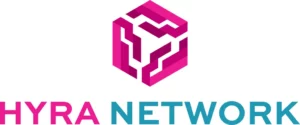
Understanding Embedded Finance And The Growth Of White-Label Neobanking
The financial landscape has undergone significant transformations in recent years, with the rise of embedded finance and white-label neobanking. As the market value of embedded finance reached an astonishing $84.12 billion in 2023, projected to grow at a staggering CAGR of 32.81% from 2024 to 2033, it’s clear that this trend is here to stay.
The growth of embedded finance has been fueled by the emergence of neobanks and banking-as-a-service (BaaS) platforms. Neobanks have revolutionized the way people manage their finances, offering features such as real-time spending notifications and low-cost international transfers. However, the challenges presented by regulatory hurdles and profitability pressures forced traditional banks to improve their digital offerings.
It is precisely here that BaaS has transformed the financial landscape, enabling licensed banks to integrate digital banking services into non-banking businesses. This shift has given rise to white-label neobanking, a key component of embedded finance, where businesses can now seamlessly blend customized financial products with their existing branding and customer experience.
The benefits of adopting white-label neobanking are undeniable. By leveraging the infrastructure and back-end services provided by specialized partners, businesses can reduce the time and resources required to bring new financial products to market. This has led to the development of innovative solutions such as Cash App, which allows users to buy, sell, and store bitcoin while receiving their paychecks directly into their accounts.
However, adopting white-label neobanking is not without its challenges. Compliance with regulatory frameworks, anti-money laundering (AML) rules, know your customer (KYC) requirements, and Gramm-Leach-Bliley Act (GLBA) regulations must be meticulously addressed to avoid severe consequences, including fines and reputational damage. Security risks also persist, as breaches in third-party systems can compromise sensitive data.
Furthermore, the risk of provider dependency looms large. Businesses relying heavily on a single banking partner may encounter operational bottlenecks if the provider fails to scale or experiences financial instability. To mitigate these risks, diversifying partnerships and maintaining fallback systems becomes crucial.
Despite these challenges, it’s clear that white-label neobanking is poised for substantial growth as businesses prioritize seamless financial integration. The projected reach of $65.95 billion by 2030 for the BaaS market serves as a testament to this trend. As emerging technologies like AI and blockchain reshape the financial services landscape, it becomes increasingly important to navigate these innovations strategically.
In conclusion, embedded finance and white-label neobanking have become essential components in today’s digital economy. As businesses continue to evolve their offerings by integrating customized financial products with existing branding, it is imperative to address the associated challenges of security and compliance head-on.
Source: www.forbes.com


